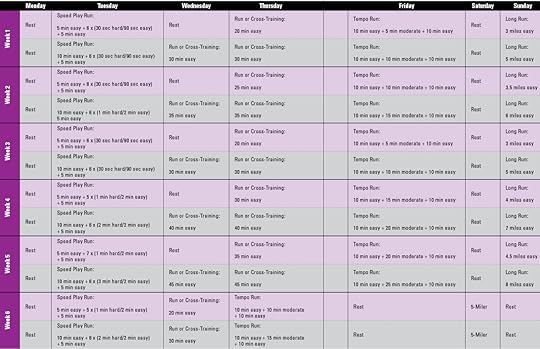Ryan Hall's Blog, page 134
August 31, 2017
Distance Runner Kasie Enman Returns To Competing After Brief Hiatus
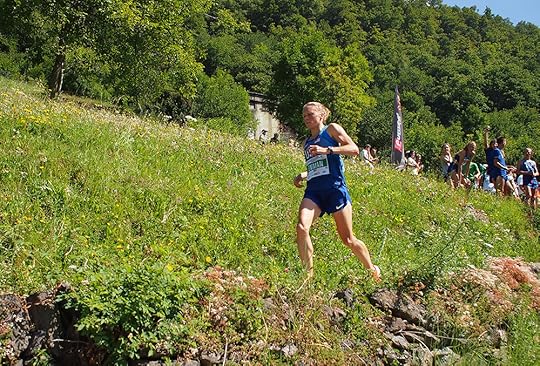 Kasie Enman competing at the 2017 Mountain Running Championships in Italy. Photo: Richard Bolt
Kasie Enman competing at the 2017 Mountain Running Championships in Italy. Photo: Richard Bolt
Almost two years ago, Kasie Enman hit the wall. The perpetual running machine stopped running.
After winning marathons, ultra races, a world trail running championship in 2011 and being a part of a U.S. North American cross-country championship team—plus winning a national snowshoe title—the former All-American at Middlebury College had to call timeout.
“I got sick and injured, and mentally and physically burned out in every way possible,” says Enman, 37. “I kind of shut down for a while.”
Training and running while working and raising one child was doable, but the stresses of a second child, an injury and the changes that come with getting older made her step off what she called her “straight path of running.” She halted training in the fall of 2015 and didn’t pick it up again until August of 2016.
“The combination of sleep deprivation and having two versus one (child), it was just a little bit harder to find that time to give yourself to recover and just get enough rest,” says Enman, who lives in Huntington, Vt. “I got progressively sort of run down and it all came to a head.”
In the past, whenever she had to slow things down because of injury or fatigue, she’d at least be able to cross train. Not this time.
“Because the energy fatigue was in the mix, I shut things down for a longer period,” she says.
RELATED: How To Start Running Again After A Short Break In Training
Enman is back now and running well. In early August, she finished second in the long-course (32K/19.9 miles) competition of the World Mountain Running Championships in Italy, leading the U.S. women to a team silver. The week before she finished 13th to help the U.S. win a team gold in the short-course competition (6.5K/4 miles), making a strong push over the second half of the route to pick up valuable points.
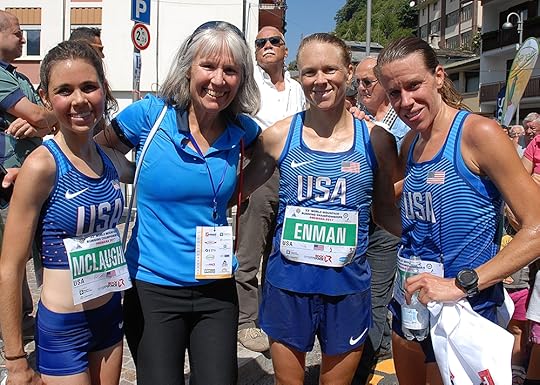 Enman helped the U.S. women get silver at the World Mountain Running Championships in August. Photo: Nano Hobbs
Enman helped the U.S. women get silver at the World Mountain Running Championships in August. Photo: Nano Hobbs
But Enman’s journey back has come with a learning curve. Since returning from her self-imposed hiatus, she’s trying to figure out how to train efficiently without pushing her body past its limits or adding to her daily stress.
“You just have to get to know yourself in a different way,” she says. “What I could do in the past may not be the same as what I can do now. What training looks like has to be a little different.”
She’s listening to her body more. If she schedules a hard day but then doesn’t feel right, she cuts the workout short.
“There are so many variables in the mix that I don’t know that I’ve honed in on an exact training formula that works perfectly, aside from not being stupid,” she says, laughing. “Not forcing things. Trying to learn from all the mistakes I’ve probably made.”
So far, at least, it seems to be working.
At the World Mountain Running Championships Enman ran the 32K course—which featured 8,000 feet of climbs and descents—in 3:57:30, 45 seconds behind winner Silvia Rampazzo of Italy. Enman had the lead for about three hours and felt strong.
“I felt I was going out really easy, but I took the lead,” she recalls. “I was surprised because I felt I was going at a really comfortable pace.”
When Enman finished she thought she’d lost by quite a bit. When she realized how close it was, she wished she “could have found 45 seconds somewhere.”
Now Enman is looking forward to new challenges and goals. Her life remains busy, with a 7- and 4-year-old and multiple jobs she’s sought or created that allow her time with her family or to work from home. She and her husband produce maple syrup on their property. She also coaches a local running club, the Green Mountain Athletic Association, and is director of First Strides Vermont, a program for beginning women runners. The former full-time teacher also has a part-time contract to lead an outdoor-learning program at her daughter’s school.
“When people ask what I do for work, I say, ‘It’s complicated,’ ” she says.
But the part-time jobs give her the time she wants with her family and for training. Now, as she nears 40, she has a new goal: Return to her roots on the road, qualify for another Olympic Trials Marathon and see if she can set a marathon PR (her best is 2:37:14).
She’ll run the Chicago Marathon on Oct. 8 and hopes to do others. She calls the marathon her “unfinished business.”
“I realize now I can go and explore fun trails in the mountains when I’m older and slower, but I can’t really go for a road marathon PR legitimately after the next couple of years,” Enman says. “I don’t want to walk away without trying for it. I’d have some regrets.”
RELATED: Photos From the 2016 U.S. Mountain Running Championships
The post Distance Runner Kasie Enman Returns To Competing After Brief Hiatus appeared first on Competitor.com.
5 Things to Know About Shalane Flanagan
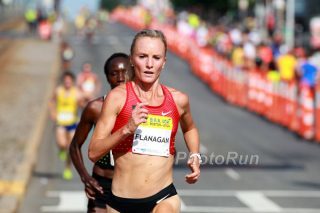
Photo: photorun.net

Photo: Photorun.net
Shalane Flanagan just announced she will be running the 2017 New York City Marathon. This will be her first race at the distance since returning from a back injury. She has run New York previously in 2010, where she finished second. Between that race and now, Flanagan had multiple career defining performances. She made two Olympic teams, ran a PR of 2:21:14 at the Berlin Marathon in 2014 and had two separate gutsy performances in the Boston Marathon.
Here are five things to know about this fierce female runner.
She’s got talent running through her veins.
Flanagan’s mother, Cheryl Treworgy, is a former marathon world record holder and a five-time World Cross-Country participant. Flanagan’s father, Steve Flanagan, was also a World Cross-Country participant and boasts a marathon PR of 2:18. So Shalane was basically destined to be a gifted runner.

Photo: Shalane Flanagan Instagram
She married a runner.
Shalane met her husband, Steve Edwards, in college. Both were members of the cross country and track teams at the University of North Carolina at Chapel Hill. Serving as Flanagan’s agent and sometimes training partner, Edwards is a huge source of support.
She’s tough.
Imagine racing around a track for 25 laps. As fast as you can. In hot temperatures. After you had food poisoning. Flanagan overcame less-than-ideal circumstances during the 10,000-meter finals of the 2008 Beijing Olympic Games, but she didn’t let the warm weather or tummy troubles slow her stride. Flanagan earned a bronze medal, which was later upgraded to silver after second-place finisher Elvan Abeylegesse of Turkey tested positive for a banned substance. She also set a new American record in 30:22.22, shattering her own American record set earlier that year.

Photo: Shalane Flanagan Instagram
She enjoys eating.
Flanagan has teamed up with whole-foods chef and food writer, Elyse Kopecky, to publish a cookbook called Run Fast, Eat Slow. Flanagan and Kopecky were teammates at North Carolina. The pair seeks to show runners how they can fuel their performances through whole foods. Both are working on a follow up right now.
[image error]
Photo: Shalane Flanagan Instagram
She recently became a foster mom.
While training for Rio, one of Flanagan’s teammates emailed their team, Bowerman Track Club, to find a foster home for two girls during their senior year of high school. Flanagan and her husband immediately agreed. The girls, Breauna and Keauna, moved in and have been a part of Flanagan’s family ever since.
RELATED: What Shalane Flanagan Can’t Run Without
The post 5 Things to Know About Shalane Flanagan appeared first on Competitor.com.
A Runner’s Guide To Exploring Brooklyn On Race Weekend


Kaseedee Jermain, a Synchrony Financial Rock ‘n’ Roll Half Marathon Brooklyn ambassador, fitness enthusiast and New York local, spills her favorite things to do race weekend in the Big Apple.
EXPLORE: Rent a bike and ride along the water following the Brooklyn Bridge Park Greenway path. Enjoy stunning views of the Brooklyn and Manhattan bridges with an added bonus—a great leg warm-up. Not into wheels? Take to foot across the Brooklyn Bridge (the early bird gets to avoid crowds) for dual skyline views.
EAT: What pairs better with New York than a bagel? A coffee from Brooklyn Roasting Company. Pro tip: Order a Maple Shay—a sweetened espresso drink, perfect for fall weather in the city. Looking for a post-race destination? Head to the oldest operating bar in Brooklyn—Teddy’s Bar and Grill in Williamsburg—for a celebratory cocktail and a post-race burger.
PLAY: Bring out your kid at heart at the Brooklyn Bridge Park by the water. You can hop on an antique carousel built in 1922 while you soak up views of the New York City skyline. From there, take a short stroll to the DUMBO/Pier 1 landing and cruise on a ferry ride along the East River (only $2.75 for this unique perspective).
RUN: Where else can you find a run club centered around street art? Check out Runstreet (runstreet.com) and join a casual group of runners who explore the city’s murals, graffiti and street art while learning about the artists and their masterpieces. Feel like going solo for your shakeout? Jog over to Prospect Park and check out one of the many dirt trails spread across the 526 acres of greenery (because it’s more fun off the beaten path).
Inside Race Day
More than 18,000 participants will hit the closed streets of one of NYC’s hippest boroughs on Saturday, Oct. 14.
Course Tip: Don’t go too fast out of the starting gate. It may be deceiving, but your first stretch down Eastern Parkway is slightly downhill—it’s easy to get excited and go all out. Beware, or your legs will be cursing you after mile 3!
Post Race: Enjoy Prospect Park! You’re already at the park when you finish, so pack a book, some snacks and a comfy blanket or towel in your race bag and find a quiet spot to relax and stretch out those fatigued muscles. The fall weather in October is historically temperate and sunny.
BROOKLYN HAS ADDED A 5-MILER: It’s not too late to train! Use this training plan and register at runrocknroll.com.
One Crazy Weekend
Brooklyn isn’t the only city where thousands of people will line up at a start line Oct 14–15. These other three events fall on the same weekend.
DENVER:

Feeling like you need a little shavasana before taking on 13.1 miles or a little stretching after a 5K? The Transamerica Rock ‘n’ Roll Denver Half Marathon offers a complimentary yoga class on Saturday after the 5K in Civic Center Park. Bring your mat for an OMazing morning.
ST. LOUIS:
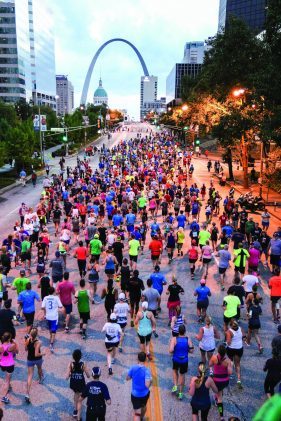
Runners will enjoy breathtaking views of the iconic Gateway Arch and discover unique neighborhoods framed by fall foliage as they make their way to the finish line at the Michelob Ultra Rock ‘n’ Roll St. Louis Half Marathon.
LISBON:

Explore the capital and largest city of Portugal by foot at this year’s EDP Rock ‘n’ Roll Lisbon Marathon & Santander Totta ½ Marathon. Participants will enjoy a fast course that starts in the seaside village of Cascais and journeys past picturesque Unesco World Heritage sites.
2-For-1 Weekend
There are more than 130 committed travelers planning to lace up at the start line on Saturday morning in Brooklyn and then jump on a plane to do it all over again the next morning in either St. Louis or Denver. That’s dedication!
The post A Runner’s Guide To Exploring Brooklyn On Race Weekend appeared first on Competitor.com.
Registration For 2018 Los Angeles Marathon Now Open

Official registration for the 2018 Skechers Performance Los Angeles Marathon opened today at 10 a.m. PST. For the first day of registration only a limited amount of marathon entries will be available for a discounted price of $165.
The 33rd edition of the race will take place on March 18, 2018 on the same ‘Stadium to Sea’ course that starts at Dodger Stadium and finishes near the Santa Monica Pier. It’s the quintessential Southern California race with urban flair and beach vibes, passing through iconic Los Angeles neighborhoods, Echo Park, Hollywood, and Beverly Hills.
New at next year’s race is the Stadium to Sea Charity Challenge. Runners who sign up to run for one of the 60 official charities of the LA Marathon will have the option to run a portion of the course alongside athletes participating in the full marathon. The options include either the Stadium portion or the Sea portion. The goal is to raise more than the $4 million raised at the 2017 LA Marathon.
For more information about the 2018 Skechers Performance Los Angeles Marathon or to register, go to lamarathon.com.
RELATED: The 2024 and 2028 Olympics Are Heading To Paris and Los Angeles
The post Registration For 2018 Los Angeles Marathon Now Open appeared first on Competitor.com.
How Runners Are Helping People in Houston
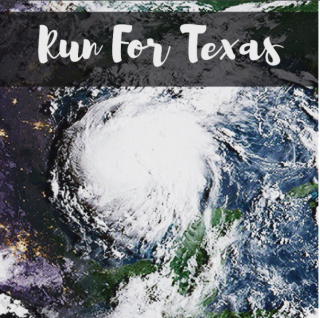
In the wake of the unprecedented flooding in Houston due to Hurricane Harvey, many runners are coming together to help those in need.
When Virginia runner BethAnn Whittaker saw the devastation in Texas, she wanted to find a way to help, even though she wasn’t local. She reached out to her friend Kelly Vigil, who has experience setting up virtual runs. Within an hour, they had a registration page ready for Run For Texas 5K and 10K virtual runs. In addition to registering for the races, runners can also donate through the registration page. Whittaker and Vigil are asking participants to track their runs on social media using #RunForTexas.
“We launched the registration site on Tuesday around noon,” Vigil said. “So in less than 48 hours we have over 1,000 runners and have raised over $19,000 and it’s still going!”
100 percent of the funds raised will go to the Texas Diaper Bank and the American Red Cross. Both Whittaker and Vigil are mothers, so providing the essentials needed for young children was very important to them.
“We can’t imagine not having diapers and necessities for our children in a time like this,” Vigil said.
Both women have been in awe of the response, but are not surprised by the altruistic nature of the running community.
“I think ultimately when tragedy strikes, people naturally want to help, we’re just unsure of what to do, especially if we don’t live in the immediate area,” said Whittiker. “Our project gave people an avenue to do something tangible from their own place in the world. We may have created the spark with our little idea, but the spirit of the running community is what has caused this project to spread like wildfire.”
Ironman Efforts
The IRONMAN Foundation, the charitable arm of IRONMAN and the Rock ‘n’ Roll Marathon Series, is calling upon their athlete community to assist in their Harvey Relief Effort. They are offering athletes three different ways of helping those affected by the storm.
Runners can donate money directly to the IRONMAN Foundation’s Harvey Relief Efforts. The IRONMAN Foundation will match all donations made by Sept. 30, 2017, up to $10,000. A custom Humanitarian Harvey Relief Effort shirt is also available for purchase. 100 percent of the proceeds will support the IRONMAN Foundation’s Harvey Relief Efforts.
Finally IRONMAN will be organizing volunteer efforts in the Texas area in the next few months. At Rock ‘n’ Roll San Antonio (Dec. 2-3), IRONMAN 70.3 Texas (April 8, 2018) and Memorial Hermann IRONMAN Texas (April 28, 2018), athletes can volunteer at local service projects during race week. IRONMAN is hoping to provide hands-on rebuilding assistance. You can register to volunteer now.
Other Ways To Help
Many specialty running stores are finding ways to help victims of the hurricane. All Fleet Feet Sports are accepting donations of new or gently used shoes and new pairs of socks. Runners can drop them off at their nearest store location. Fleet Feet is asking that runners write the gender and size on the heel of the shoe.
Mike Rouse, who owns Run Texas in Frisco, Texas, is organizing a group run from the store on Monday, Sept. 4. He plans to donate $1 for every mile each participant runs. Since announcing the event, runners not local to the store reached out asking how they can help. Rouse set up a Just Giving page to accept monetary donations. All proceeds will be used to purchase clothing and shoes to be donated to hurricane victims.
#HoustonStrong #ForTheCity #GoCoogs pic.twitter.com/aAlkkcNqnE
— Coach Kelvin Sampson (@CoachSampsonUH) August 28, 2017
Runners can even help with donation efforts to those outside of their sport. Kevin Sampson, men’s basketball coach at University of Houston, came up with a plan to get clothing to those who need it while involving many sports teams. He’s asking any team—men’s and women’s; high school, college, or beyond—to send 20 of their team or school shirts and ten pairs of shoes to him. Sampson will then donate these items to rescue efforts around Houston.
If you want to share other ways that runners are helping those affected in Texas, tweet it to @RunCompetitor.
The post How Runners Are Helping People in Houston appeared first on Competitor.com.
10 Best Trail Running Shoes Of Fall 2017
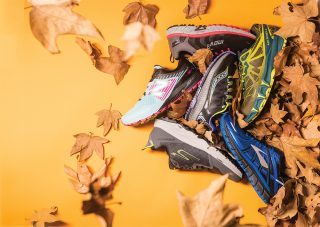
The fall season is the perfect time to get off the road and hit the trails. Crisp air, cooler temps, changing leaves and clear skies just beg for adventures on dirt, wood chips or pine needles. We scoured the season’s latest trail running shoe offerings—from weather-protecting hard chargers to road-to-trail hybrids—and tested them mile after mile on trails in Colorado, California and New Hampshire to help you find your perfect pair.
Why Trail Shoes?
Yes, you can run trails in your road shoes. But the off-road-specific features found on these shoes enhance your running experience on the trails. Here’s how:
TRACTION. Trail running shoe outsoles often feature toothy multi-directional lugs and/or sticky rubber to keep you surefooted on any surface.
PROTECTION. Toe bumpers (extra material reinforcing the toe area) and reinforced sidewalls (the sides of the shoe, at your arch and exterior midfoot) will keep your foot protected from rocks and roots.
ARMOR. Some trail running shoes have thin, hard rubber rockplates sandwiched between the midsole and outsole to keep rocks and roots from jabbing your feet.
STABILITY. The uppers of trail running shoes tend to be more supportive than road shoes, encasing your foot more securely to keep you in control uphill, downhill and on off-camber trails.
RELATED: 4 Tips For Buying Trail Running Shoes
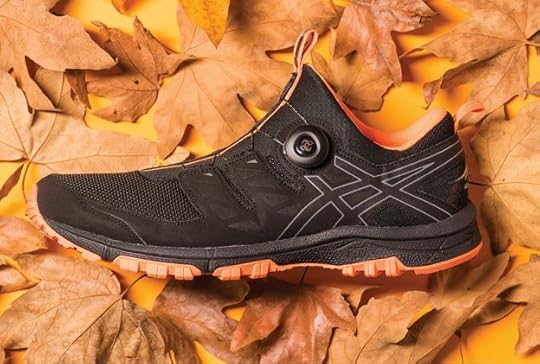
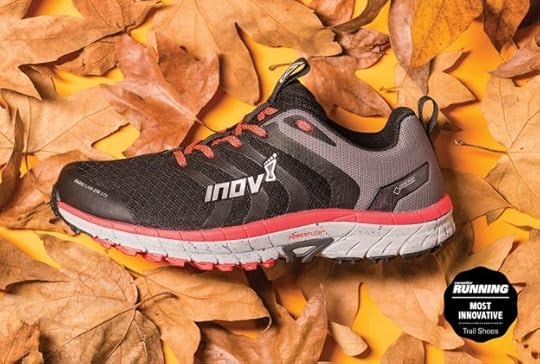
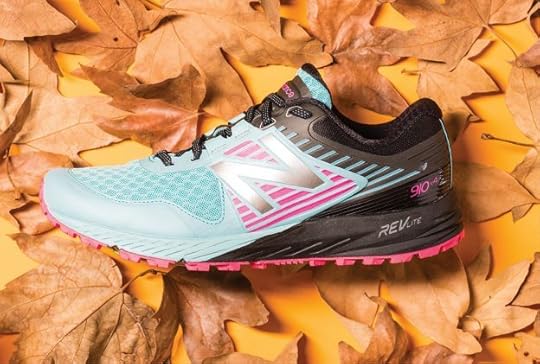
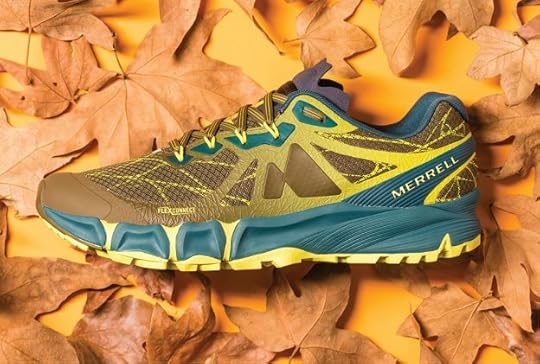

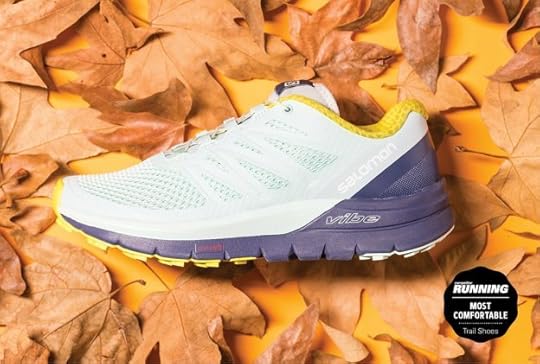


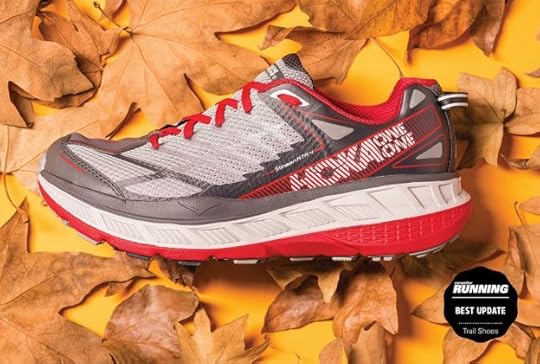

The post 10 Best Trail Running Shoes Of Fall 2017 appeared first on Competitor.com.
August 30, 2017
Under Armour’s New Sleepwear Promises Athletes Recovery At Rest
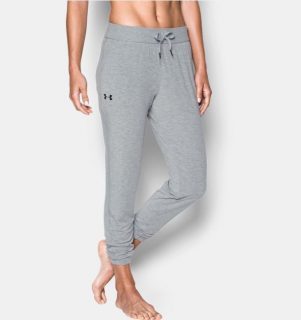
Could the right pajamas help athletes to sleep better and recover faster? That is the promise behind Under Armour’s new Athlete Recovery Sleepwear.
The concept for the performance sleepwear was developed in collaboration with New England Patriots quarterback Tom Brady, who is sponsored by the brand. Brady had been using bio-ceramic treatments for injury prevention and recovery to specific muscles, with great success. The thought was to develop a garment that would use that technology all over the body.
Under Armour incorporated the bio-ceramic technology into the patterned lining of the pajamas. The bio-ceramic particles absorb heat emitted by the body and reflect back Far Infrared Radiation (FIR). FIR helps to reduce inflammation and improve circulation, which aids in recovery. The technology also keeps the body from overheating while you sleep.
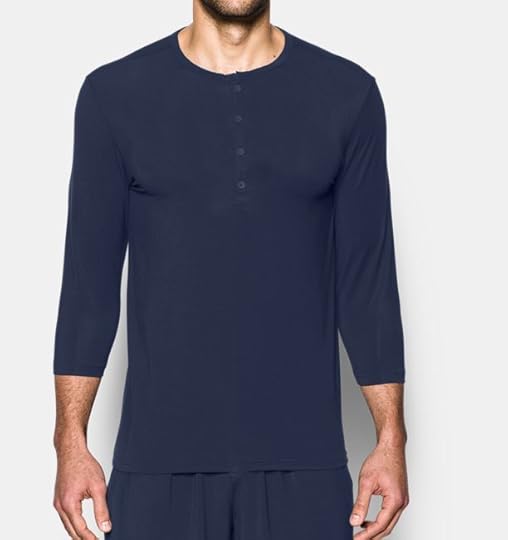
“I firmly believe that sleep and recovery are critical aspects of an effective and holistic training program,” said Tom Brady in a statement. “Proper sleep has helped me get to where I am today as an athlete. It is something that I continue to rely on every day. I am excited to partner with Under Armour to bring game-changing sleepwear with the same bio-ceramics technology I use to athletes all around the world.”
Besides having Brady’s stamp of approval, the sleepwear is worn by other Under Armour athletes, such as NBA star Steph Curry and golfer Jordan Speith. The fabric of the sleepwear is super soft and the silhouettes are stylish. The jogger pants look fashionable enough to wear outside. The pajamas tops come in tank, short sleeve, and long sleeve, while bottom options include shorts and pants. However, Under Armour notes that the more coverage you wear, the better your recovery will be.
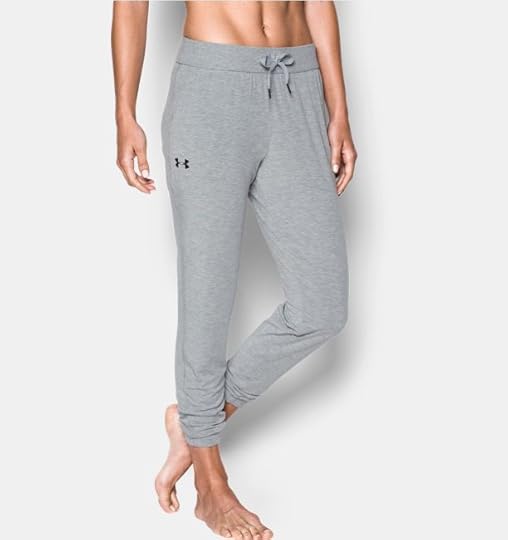
One drawback is that it is pricey to sleep like a Super Bowl-winning quarterback. Tops range from $70-100 and bottoms range from $60-100. However, the health benefits of FIR are backed by independent research from the National Institutes of Health. And more importantly, consumers seem to love the pajamas, with overwhelmingly positive reviews. If it works for Tom Brady, maybe there is a chance this sleepwear could help you quickly recover from your next tough run.
RELATED: Unique Recovery Gear That Works
The post Under Armour’s New Sleepwear Promises Athletes Recovery At Rest appeared first on Competitor.com.
Run A 5-Miler In Just 6 Weeks With This Training Plan


If you want to run a 5K, it’s not hard to find one. Same thing with 10Ks. But a 5-miler is harder to come by. Thankfully this dearth is being addressed with new races, such as the Synchrony Financial Rock ‘n’ Roll Brooklyn 5 Miler on Oct. 14, popping up across the country.
Why should you care? Because the 5-mile distance is the perfect stepping stone for beginning runners who have completed one or more 5Ks and are ready to move up in distance, but perhaps aren’t quite ready for a 10K.
It’s also a great distance for more experienced runners who are looking to run faster times. Building the speed and aerobic strength you need to run your best 5-miler will make you a stronger runner all around and help you improve at other race distances.
Set a Goal
If you are fit enough to complete a 5K, you can prepare for a successful 5-mile experience in just six weeks. Choose our Just Finish training plan to focus on building your mileage. If you are gunning for a time goal, you should be able to at least jog 5 miles already and should follow the Go for Time version.
Dial in Your Effort
This training plan employs a simple, three-zone intensity scale:
Easy is a comfortable jog that allows you to speak in full sentences without losing your breath.
Moderate corresponds to the highest speed you could sustain for 30 minutes if you’re a newer runner—or 60 minutes if you’re already in pretty good shape.
Hard is about 80 percent of the effort level you could sustain for the required distance, which means a 30-second hard effort should be run a little faster than a 1-minute hard effort, a 1-minute effort would be faster than a 2-minute hard effort and so on.
How to Cross-Train
Some workouts may be done either as a run or a cross-training session. If you choose to cross-train, select a legs-dominant, non-impact cardio activity, such as the elliptical or bicycling.
RELATED: How To Integrate Cross-Training Into Your Running
New to a 5-miler? Here’s pacing 101
When you are running a race at an unfamiliar distance, pacing it can be challenging. You’ll get your best result if your pace is consistent throughout the entire event, though expect to run slower climbing hills and faster when going down them. Here’s some advice based on our two training plans:
Just Finish
Naturally, if your goal is just to finish, pacing is a little easier. Start at an effort level you are confident you can sustain the whole way, erring on the side of caution. Use the experience you’ve gained in your longer training runs as a guide. For example, if you were starting to bonk near the end of your 4.5-miler, start your 5-miler at a slightly slower pace.
Go For Time
If you want to go for time, choose a goal pace for your 5-miler that is 12- to 18-seconds per mile slower than the pace you ran in your best or most recent 5K (closer to 12 seconds if you’re a faster runner, closer to 18 seconds for slower runners). If your most recent 5K time was 26 minutes (8:22 per mile), aim to run around 43 minutes (8:36 per mile) in your 5-miler.
If you don’t nail it the first time (starting too fast and slowing near the end, or starting too slow and finishing with gas left in the tank), don’t sweat it—the practice will help you nail your next 5-miler!
6 Week Training Plan
Click on the plan to open in a new window and print!
RELATED: 5 Tips For Sticking With Your Training Plan
The post Run A 5-Miler In Just 6 Weeks With This Training Plan appeared first on Competitor.com.
6 Life Lessons You Can Learn From Running

When I first started running a few years ago, my motivation was more for my emotional health than anything else. I was a mom of two young kids and desperately needed an outlet. I found my peace, therapy and sanity in running, as I know most of you have, too. What I did not realize at the time, however, was how many life lessons running would teach me. Interestingly enough, the challenges, gifts and accomplishments we find in running parallel our everyday lives. Here are some lessons we can all learn about life from running.
Prepare, then go with the flow.
This lesson is essential when it comes time to taper after training for months. Many runners freak out during the taper period, fearing they haven’t done enough. As is the case with most things in life, if we put in our time and prepare well, we need to find comfort in the fact that we’ve done what we can. Then we need to let it go.
Patience is a virtue.
If you have ever been an injured runner, then you know that you have no choice but to be patient with your body. You cannot rush an injury, and if you do, you will sabotage yourself. Patience is a quality that serves us well in all areas of our lives. If we learn to let go and sit back when we really want to be impulsive and crazy, good things come.
However good or bad a situation, it will change.
Running has as many ups and downs as life. One day your run is spectacular, and the next day it sucks beyond belief. Throughout the span of a longer race such as a marathon, you will encounter aches, pains, cramps and emotional highs and lows that tend to pass. Throughout life, as throughout running, we can take comfort in the fact that when things are rough, they will get better. And we are realistic in that when things are wonderful, we will once again be challenged.
RELATED: What Meb Learned From Time Spent Running With His Family
Sometimes the only thing holding you back is your mind.
Nothing is truer for runners than how much impact the mind has on the body’s ability to perform. As Henry Ford once said, “Whether you think you can or can’t, you’re right.” Take the risk. Push that extra mile. Believe it can happen and it just might.
Comparison is the thief of joy.
In this day and age, and especially with the barrage of social media, it has become instantaneously easy to compare ourselves to others. As runners, we do this too. All that comparison does is make us feel worse or superior in a way that’s not healthy. Just know that there will always be someone faster than you and someone slower than you. In life, your mission is to live up to your own potential.
Don’t take yourself too seriously.
One of the best life lessons I have ever learned is to laugh at myself. Most of the time, we are much harder on ourselves than anyone is on us. In life, as with our running, if we can learn to ease up on ourselves a bit and enjoy the journey more, we will certainly find greater satisfaction and happiness.
RELATED: How To Find Motivation When You Don’t Feel Like Running
The post 6 Life Lessons You Can Learn From Running appeared first on Competitor.com.
What’s Up With The Jogging Ban In Sierra Leone?

The harbor in Sierra Leone. Photo: Shutterstock.com
Sierra Leone is on the Atlantic coast of West Africa and once was filled with both the sounds and silence of running groups who took to the city streets every weekend. Now, however, the practice has ceased, all because of a ban by authorities, who cited disorderly conduct and criminal behavior.
According to The New York Times, group jogging was banned last month in an official police statement: they “‘observed with dismay’ that large numbers jog in the streets ‘with a hint of menace, raining insults, obstructing traffic, pounding on vehicles, playing loud music’ and robbing those they pass.”
It was reported that joggers and local rights groups disagree, especially as many of the shops are closed on Sundays and on weekends, the streets are mostly empty except for runners.
One runner told the paper: “How can people snatch phones and cause public unrest on a day when shops and offices are closed and the streets are empty? There is no reason to stop us from jogging.”
The ban does not affect those running in groups on beaches or in recreational areas and applies to members of the armed forces, as well. Groups must apply for police permission to run together moving forward.
For more from Sierra Leone, you can read the full article in The New York Times.
The post What’s Up With The Jogging Ban In Sierra Leone? appeared first on Competitor.com.
Ryan Hall's Blog
- Ryan Hall's profile
- 21 followers


